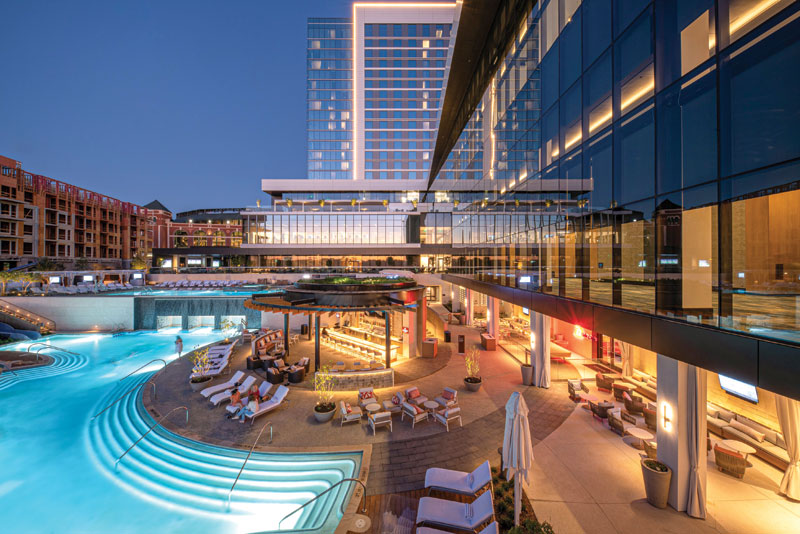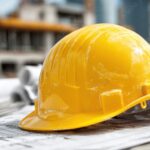
Modern architecture has prioritized beauty, sustainability, resiliency, and efficiency, driving design innovation. Metal composite materials (MCM) have redefined the scope of cladding through lightweight versatility. Easy to fabricate and install, with an almost limitless color palette, MCM has inspired new aesthetics and pushed designers to challenge what has been possible for the last 50 years.
However, ensuring life safety is paramount above other considerations. In the United States, the International Building Code (IBC) establishes the standard for building construction. This ever-evolving model-building code is a detailed and stringent blueprint for safer environments for building. Navigating the IBC can be daunting, but code-compliant MCM represents a responsible choice for your next project.
Fire safety tests
The IBC lists numerous fire resistance standards and methods, such as those listed in Chapters 7 and 14. These tests are independent and third-party verified to ensure that each material and its usage in building assemblies meet the minimum requirements for code compliance. Three pertinent standards for cladding systems are the ASTM E84, NFPA 285, and the ASTM E136.
ASTM E84 – Standard Test Method for Surface Burning Characteristics of Building Materials
- Measures flame spread and smoke development to see how a material will respond to an exposed fire.
- This test uses a Steiner tunnel to monitor a material sample exposed to a controlled fire.
- This comparative test provides Flame Spread Index (FSI) and Smoke Developed Index (SDI) values that ensure building products meet code specifications.
The speed at which a fire spreads and the amount of smoke produced are vital for material selection. MCM can be made with polyethylene (PE), fire-resistant (FR) mineral fill or non-combustible (NC) core. All three core types may meet the ASTM E84 minimum standard of FSI of 75 and SDI of 450 for projects up to 12.2 m (40 ft) from grade.
NFPA-285 – Standard Fire Test Method for Evaluation of Fire Propagation Characteristics of Exterior Wall Assemblies Containing Combustible Components
- This assembly test required of wall systems—including combustible elements—is designed to ensure a fire does not traverse a wall.
- The test subjects a multi-story wall assembly with a window to a series of two controlled fires. The first burner is ignited inside the first-floor test room, and a second is ignited at the top of the first-story window opening. Monitors track flame spread and temperature for more than 30 minutes.
- An assembly will fail for several reasons, including if the flame reaches the interior of the second story, if the fire exceeds 3.1 m (10 ft) above the window or 1.5 m (5 ft) horizontally from the centerline of the window opening, or if any of the thermocouples register a temperature above 538 C (1000 F).
The external wall assembly involves more than just cladding, such as MCM. The air-water barrier, insulation, and attachment system to the building substrate all contribute to the wall’s performance. Each component must be assessed both individually and together to evaluate fire safety. A full-scale wall assembly test, NFPA 285, puts the entire cladding system through a literal trial by fire.
The NFPA 285 test can be described as a worst-case scenario wall test. A wall assembly is erected in a near-real-world setup without additional active or passive fire suppression systems such as sprinklers or dampers in ventilation. Required for buildings above 12.2 m (40 ft) from grade, MCM with fire-resistant (FR) and non-combustible (NC) cores have been incorporated into wall assemblies that have successfully passed the NFPA 285 and are safe to use in high-rise construction in the United States.
Private-sector organizations recognized by the Occupational Safety and Health Administration (OSHA), known as Nationally Recognized Testing Laboratories (NRTLs), can issue certification of verified performance and safety standards. Referred to as a “listed system,” these wall assemblies have undergone an independent third-party evaluation to ensure the product meets all applicable building code requirements.
ASTM E136 – Standard Test Method for Assessing Combustibility of Materials Using a Vertical Tube Furnace at 750°C
- A material test that can define non-combustibility in the United States.
- Materials specimens are placed in a vertical tube furnace and subjected to a temperature of 750 C (1382 F) to help determine if they will ignite or contribute to flame spread or smoke production.
- For the core of a composite panel to pass, there must be no flaming after the first 30 seconds of testing, no temperature rise above 30 C (86 F) above the furnace temperature, and no weight loss exceeding 50 percent in at least three out of four test specimens.
As more monumental architecture strives for higher safety standards, the demand for non-combustible materials has grown. International incidents have drawn a sharp focus on combustible cladding, and though the IBC’s rigorous standards would prevent the inappropriate use of PE core above 12.2 m (40 ft) from grade, some projects’ specifications have set a higher threshold than the code requires.
The definition of combustion varies worldwide, and until now, no MCM, even those defined as Euroclass A1 in the European Union (EU), has been able to pass the U.S. building code requirements for non-combustible as defined by the ASTM E136.
ALPOLIC, a MCM manufacturer, will launch the first non-combustible core for MCM to pass the ASTM E136 and meet the performance criteria set by the IBC in the fall of 2025. Successfully passing the NFPA 285, this innovation in architectural cladding provides those is the design-build community who want the advantages of MCM but are met with a non-combustible requirement in project specifications.
Why do AEC professionals prefer MCM?
Designed for specific project needs, a prefinished MCM with a fluoroethylene vinyl ether-based (FEVE) paint system has gloss ranges from 6 to 70, allowing for the most understated mattes to the most opulent high-gloss. These finishes can change appearance with the viewing angle, and even mimic natural material patterns such as wood and stone without the cost, weight, or maintenance concerns.
MCM can support green building initiatives, as it is made from sustainable aluminum, though other natural metals such as zinc, stainless steel, copper, and titanium are available. With low minimums, affordable MCM can be custom ordered to meet color and panel size needs in as little as 93 m2 (1,000 sf).
Creating memorable architectural design begins with a vision, first projected by the façade. It is the hallmark of the architect and the legacy of the building owner. Leveraging the unbiased, standardized, independent lab-tested standards outlined in the IBC ensures that vision is uncompromising. Beautiful, durable, safe MCM panels can meet your next project’s specific design needs.
Michael Bowie is the technical services manager in the ALPOLIC Division of Mitsubishi Chemical America. After a decade of hands-on experience with MCM’s production and quality assurance, he stands ready to answer your technical questions. Learn more about how MCM can fit into your next project by scheduling an AIA-accredited continuation education course today.





